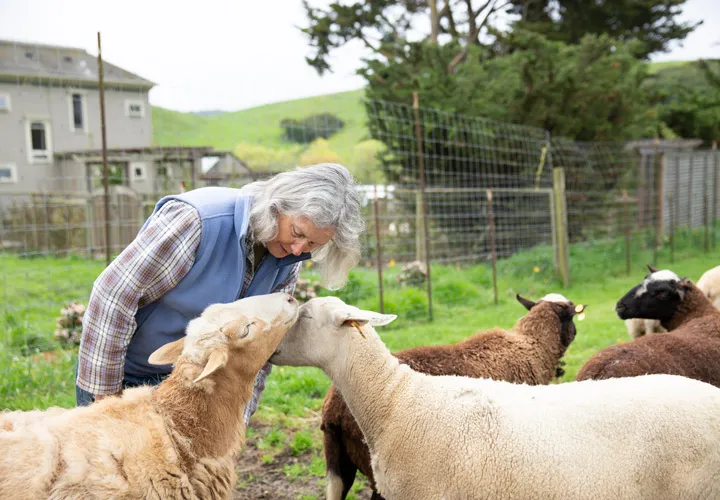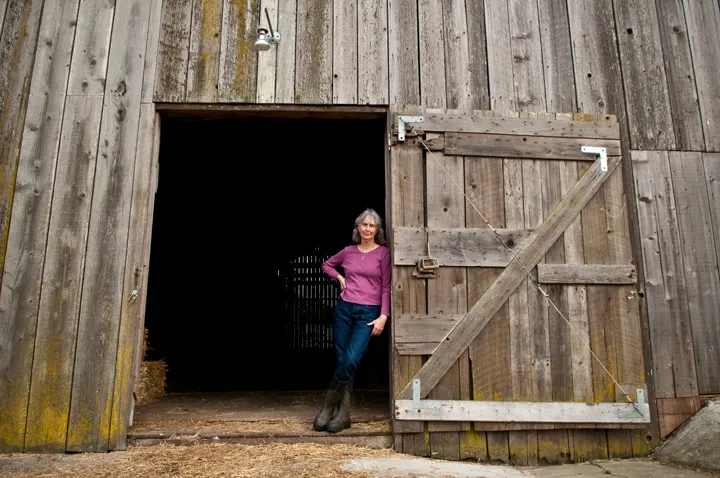Hawaii, a land of sprawling white-sand beaches, majestic volcanoes, and unique indigenous culture, is also a sanctuary for numerous rare wildlife species. Beyond its magnificent natural beauty, this island harbors admirable conservation efforts, where people unite to preserve the habitat and native animals. Let’s explore the wildlife conservation centers of Hawaii, where you can witness the harmonious blend of sustainable agriculture and environmental protection.
Balancing Family Farming and Environmental Stewardship: The Story of Chileno Valley Ranch
The story of Sally and Mike Gale, owners of Chileno Valley Ranch in Marin, California, exemplifies the endeavor to balance farming activities with environmental protection. Nearly three decades ago, they decided to leave their stable life in Oahu, Hawaii, to embark on a new journey at the family ranch. Despite lacking experience in agriculture, Sally and Mike bravely faced the challenge and transformed the neglected ranch into a sustainable business model.
Reviving an Agricultural and Conservation Dream
Sally Gale had cherished a dream about Chileno Valley Ranch since childhood trips. When the opportunity arose, she and Mike seized it without hesitation. They sold their house in Hawaii to raise capital for ranch restoration and sought support from government organizations like the Natural Resources Conservation Service (NRCS). With NRCS assistance, they built cross-fences and water systems, laying the groundwork for ranch development.
During this process, Sally and Mike attended workshops organized by the University of California Cooperative Extension (UCCE) of Marin County to learn about sustainable farming practices. Extension experts determined that livestock agriculture was the most suitable option for the ranch’s hilly terrain and small pastures. Lacking sufficient capital to invest in a dairy operation, Sally and Mike decided to start with beef cattle farming.

The Relationship Between the Ranch and Marin Agricultural Land Trust (MALT)
Sally and Mike learned about the Marin Agricultural Land Trust (MALT) while still in Hawaii and admired their efforts to protect family farms from urbanization. At an agricultural conference, Mike met Ellen Straus, MALT’s co-founder, and invited her to visit the ranch. The collaboration between Chileno Valley Ranch and MALT opened a new chapter in the ranch’s conservation journey.
MALT proposed that Sally and Mike work together to protect the ranch through an agricultural conservation easement. This not only provided financial resources to improve the ranch but also helped protect the natural habitat. MALT applied for funding from the California Coastal Conservancy and used Chileno Valley Ranch as a pilot model for the latest management practices. In 2000, Chileno Valley Ranch officially became a protected property of MALT.
Chileno Valley Ranch: A Central Stage for Land and Wildlife Protection
Since moving to Chileno Valley Ranch in 1993, Sally and Mike have achieved significant milestones in land and wildlife conservation.
- Restoring the Victorian House: Transforming the historic house into a regional landmark.
- Building Fences: Creating boundaries to protect the land and support rotational grazing.
- Restoring Creeks and Native Woodlands: Improving habitats for wildlife.
- Establishing an Efficient Water System: Utilizing water resources sustainably.
- Planting Heirloom Fruit Trees: Developing an ecological agriculture business.
- Developing Grass-fed Beef Cattle Farming: Providing high-quality and environmentally friendly agricultural products.
- Participating in Local Organizations: Contributing to conservation and community development activities.

Chileno Valley Newt Brigade: Protecting a Rare Salamander Species
One of Sally Gale’s notable conservation projects is the establishment of the Chileno Valley Newt Brigade. The brigade’s mission is to protect the native California newt during breeding season when they must cross roads to reach Laguna pond for breeding. Sally witnessed many newts killed by vehicles and was determined to take action.
The Newt Brigade has attracted the participation of numerous volunteers and experts from local organizations. Together, they rescue newts in danger and collect scientific data about their habitat. This project has contributed to raising community awareness about the importance of protecting wildlife species.

Lessons from Chileno Valley Ranch
The story of Chileno Valley Ranch is an inspiration for those seeking to combine sustainable agriculture with environmental protection. Sally Gale shares, “When I look back, the things I’m most proud of all have to do with creek restoration on the ranches.” A love for nature and a sense of responsibility to the community have helped Sally and Mike overcome all challenges and build a sustainable ranch, contributing to the conservation of wildlife habitats.
Spreading the Spirit of Wildlife Conservation in Hawaii
Beyond Chileno Valley Ranch, Hawaii has many other wildlife conservation centers striving to protect native animal species. Nature reserves, national parks, and non-profit organizations are collaborating to implement conservation, research, and education programs to raise community awareness about the importance of biodiversity protection.
When visiting Hawaii, you can explore wildlife conservation centers, learn about rare animal species, and contribute to conservation efforts. Remember, every small action we take can make a big difference in protecting the habitats of wildlife.
Conclusion
Hawaii’s wildlife conservation centers are not only places to protect rare animal species but also symbols of harmony between humans and nature. The story of Chileno Valley Ranch and the Newt Brigade demonstrates that passion, determination, and collaboration can create positive changes in environmental protection. Let’s join hands to protect Hawaii’s wildlife so that future generations can admire the beauty of unspoiled nature and the unique biodiversity of this island.